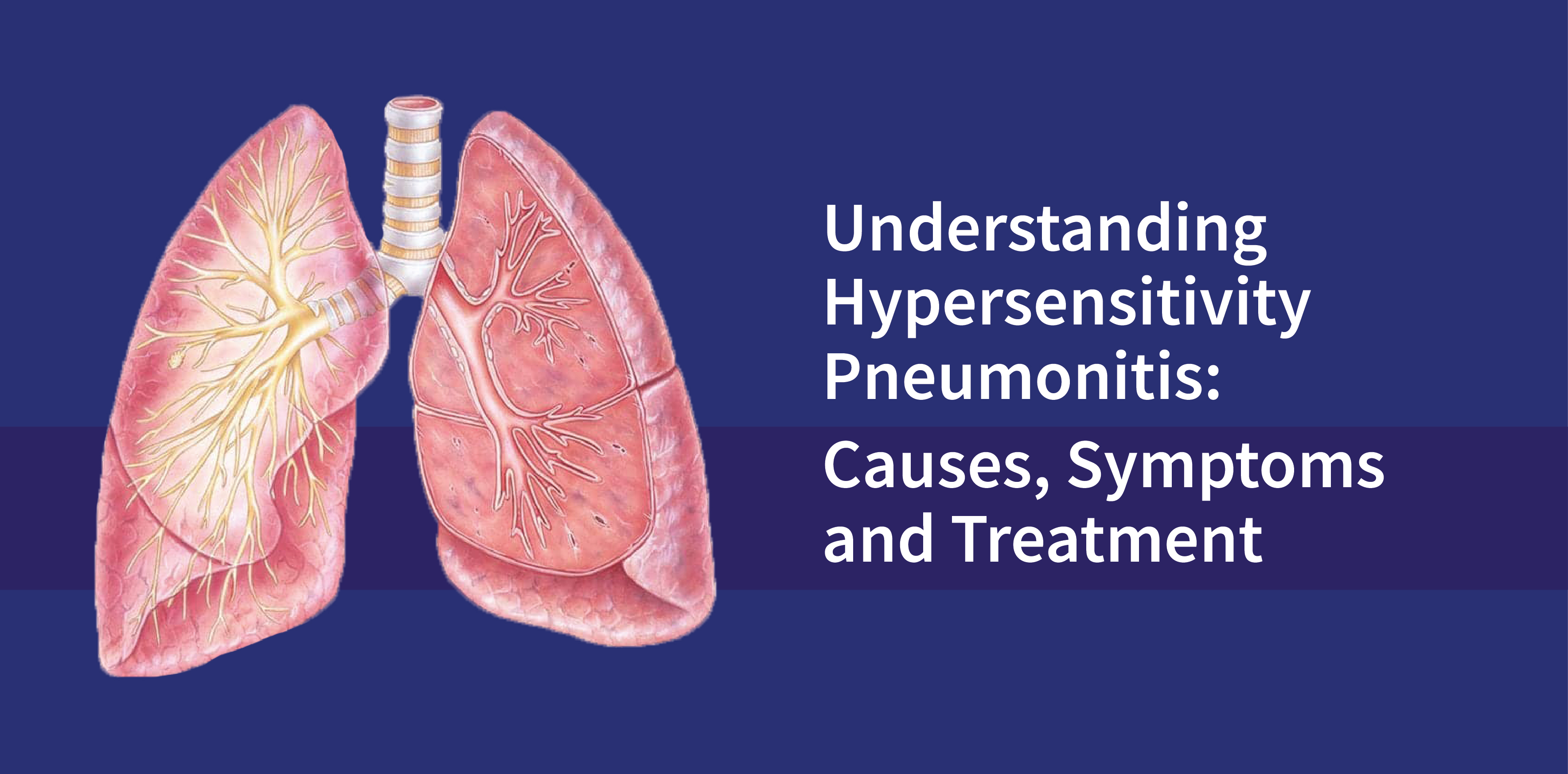Understanding Hypersensitivity Pneumonitis: Causes, Symptoms, and Treatment

Introduction:
Hypersensitivity pneumonitis (HP), also known as extrinsic allergic alveolitis , is a lung condition that occurs as a result of an immune system response to repeated inhalation of certain environmental substances. This condition can gradually progress to lung fibrosis over a period of time Hypersensitivity pneumonitis is the most common cause of lung fibrosis / Interstitial Lung disease in India. In this article, we will explore the causes, symptoms, and treatment options for hypersensitivity pneumonitis.
Causes of Hypersensitivity Pneumonitis:
Hypersensitivity pneumonitis is primarily caused by the inhalation of organic substances found in the environment. These substances, known as antigens, trigger an immune response in susceptible individuals.
Common sources of these antigens include:
- Mold and Fungi: Exposure to mold and fungi spores commonly found in damp environments such as
basements, hay.
IN INDIA HYPERSENSITIVE SENSITIVITY PNEUMONITIS DEVELOPED DUE TO BIRD DROPPING SPECIALLY PIGEON IS VERY COMMON. - Bacteria and Viruses: Certain bacteria and viruses present in the environment, such as Mycobacterium avium complex (MAC), can also trigger the condition.
- Animal Proteins: Individuals working closely with animals, such as farmers, poultry workers, or pet owners, may develop hypersensitivity pneumonitis due to exposure to animal proteins found in dander, feathers, or urine.
- Occupational Exposures: Certain occupations involving exposure to chemicals, dust, or metalworking fluids can increase the risk of developing hypersensitivity pneumonitis.
Symptoms of Hypersensitivity Pneumonitis:
The symptoms of hypersensitivity pneumonitis can vary depending on the intensity and duration of exposure to the causative antigens. Some common symptoms include:
- Respiratory Issues: Shortness of breath, coughing, wheezing, and chest tightness are frequently reported symptoms. These symptoms often occur within a few hours after exposure to the triggering substance and may continue for a long time.
- Fatigue: General fatigue, weakness, and malaise may be experienced, particularly during or after exposure to the antigens.
- Flu-like Symptoms: Some individuals may develop symptoms resembling the flu, including fever, chills, body aches, and headache.
- Gradual Onset: In cases of long-term exposure, symptoms may become chronic and persistent, leading to weight loss, clubbing of the fingers. The patients can have gradually increasing breathlessness due to chronic lung fibrosis / Interstitial lung disease in such a situation.
- Cough - patient may have persistent dry cough. In case of superadded infection, the cough may be purulent.
Diagnosis and Treatment:
If hypersensitivity pneumonitis is suspected, a thorough medical evaluation is necessary to establish a definitive diagnosis. The diagnostic process may include:
- Medical History: The physician will review the patient's medical history, including occupation, hobbies, and exposure to potential antigens.
- Physical Examination: The doctor will listen to the patient's lungs using a stethoscope to detect abnormal breathing sounds and evaluate other physical signs.
- Flu-like Symptoms: Some individuals may develop symptoms resembling the flu, including fever, chills, body aches, and headache.
- Imaging Studies: Chest X-rays or high-resolution computed tomography (HRCT) scans can help identify characteristic patterns of lung inflammation.
- Pulmonary Function Tests: These tests assess lung capacity and can help determine the severity of the condition.
Other treatment options may include:
- Avoid exposure: Once diagnosed, the primary approach to managing hypersensitivity pneumonitis is to avoid further exposure to the causative antigens.
- Medications: Corticosteroids may be prescribed to reduce lung inflammation and alleviate symptoms in acute cases. Other immunosuppressive medications may be considered for long-term management.
- Oxygen Therapy: In severe cases, supplemental oxygen may be needed to ensure adequate oxygenation of the blood.
- Pulmonary Rehabilitation: This involves a comprehensive program of exercise, breathing techniques, and education to improve lung function and overall well-being.
- Lung Transplant
A lung transplant is a surgery done to remove a diseased lung and replace it with a healthy lung from another person. The surgery may be done for one lung or for both. Lung transplants can be done on people of almost all ages from newborns to adults up to age 65 and sometimes even later.
Types of lung transplant procedures include:
- Single lung. This is the transplant of one lung.
- Double lung. This is the transplant of both lungs.
If you are experiencing symptoms of hypersensitivity pneumonitis or suspect that you may have the condition, it is crucial to consult with a healthcare professional to receive an accurate diagnosis and determine the best course of treatment. Dr. Jeenam Shah, a renowned pulmonologist in South Mumbai, is the expert you can trust for effective management of hypersensitivity pneumonitis and other respiratory disorders.
At Dr. Jeenam Shah's Advanced Specialty Clinic, you will find specialized care for all forms of respiratory and allergic disorders. Dr. Shah's expertise lies in bronchoscopy and interventional pulmonology, with a particular focus on airway and interstitial lung disorders, as well as sleep apnea management.
Hypersensitivity pneumonitis, a type of lung inflammation caused by immune system reactions to certain environmental substances, requires a comprehensive approach to diagnosis and treatment. Dr. Shah's extensive knowledge and experience in the field allow him to accurately diagnose hypersensitivity pneumonitis and develop personalized treatment plans tailored to each patient's needs.
 Call For Appointment
Call For Appointment